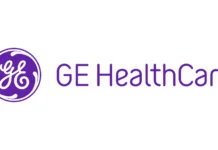As per the latest estimates by the WHO, 5 billion people across the world will be able to access healthcare by 2030.
The care seeking behavior’s present pattern is where enhancements can be made that are tangible. The fact is that most of the patients happen to be confused with regards to the healthcare system structure and often find it a challenge to navigate and end up searching for care in the wrong care setting.
There happens to be a dearth of healthcare conditions and engagement education between providers as well as their patients.
What are the consequences when it comes to present care-seeking behavior patterns?
One of the peer review studies that has been conducted shows that the majority of patients, 74%, to be precise, are unaware of the appropriate level of care when it comes to their needs. Within this number, 40.5% went on to actively state that they were unaware of the best place to search for care, and there were 33.5% who had a plan that was not at all appropriate for their condition clinically.
This kind of dearth of acumen that is seen in care seekers leads to an elevated usage of medical facilities that are inappropriate and goes on to negatively affect the entire elements of the healthcare system, which, by the way, already happen to be under a lot of pressure.
- The average wait time when it comes to a physician appointment in the US is around 26 days.
- The overutilization of the emergency department is identified as one of the major elements that limits ideal, timely, and, of course, efficient care.
- The unnecessary usage of visits to the emergency department goes on to cost the US health system over $47 billion every year.
- There are 34% of doctors across the world who observe rising medical errors and go on to attribute this cause due to shortage of staff as well as stress that’s constant.
- 67% of US citizens have gone on to have a negative healthcare experience.
The point here is that there is indeed a basic change that’s needed, and with regards to it, the patient care-seeking behavior happens to be playing a critical role. Evidence has been put up where patients are looking out for the right answers, wherein 67% of them want better patient engagement, and there are 80% of the patients who happen to make a shift from the providers due to navigation as one reason to leave.
The Virtual Triage effect on the care seeking behavior
It is worth noting that virtual triage is the usage of digital technologies so as to analyze the patient symptoms and also gauge an appropriate level of care, especially in guiding patients towards telemedicine, apt physician consultations, emergency care or specialists, or advising when it comes to self-care practices.
Such kinds of solutions can go on get accessed by way of the internet, and that too 24/7 through any device or location, hence making the search when it comes to healthcare information more easy and convenient.
In case of its right execution, there can be improved access to care, with around 46.6% of the evaluations conducted outside of the office hours of the physician. All this can also go on to have quite a positive impact when it comes to healthcare costs.
The peer-reviewed study that is mentioned above for that virtual triage can go on to result in:
• Increased Intent When It Comes to Self-Care: With 69.5% of users intending to follow recommendations when it comes to self-care.
• Care Navigation That’s Much Better: There was a decrease in patients who remained uncertain in terms of their care by 25.4%.
• Patient Satisfaction That’s High: 80% of the participants went on to indicate that they were likely, or rather highly likely, to make use of virtual triage again in the future.
The statistics go on to make use of the positive impact that virtual triage can go on to have not just when it comes to patients but also across the wider healthcare network. This change happens to be initiated by way of opening up access to care, motivating the patients to engage early within their journey, and directing the non-urgent cases away from the emergency departments, thereby freeing up resources for the ones who truly deserve the emergency care.
Moreover, when patients get engaged, this has a positive influence as far as healthcare spending and healthcare outcomes are concerned. For instance, one company that specializes in behavioral change went on to gauge that highly engaged members had 63% fewer yearly claims increases as compared to the less engaged members. Apart from this, engaged members happened to be 34% more likely to make use of preventive services, and 10% were likely to get immunizations.
The ownership happens to be in the healthcare settings to give patients the tools they require so as to adapt their care-seeking behavior safely as well as more efficiently, and this can very well be done by way of using virtual triage in order to open up access to care, enable the patients, and triage patients to navigate the healthcare system intricacies to the right care setting.


















